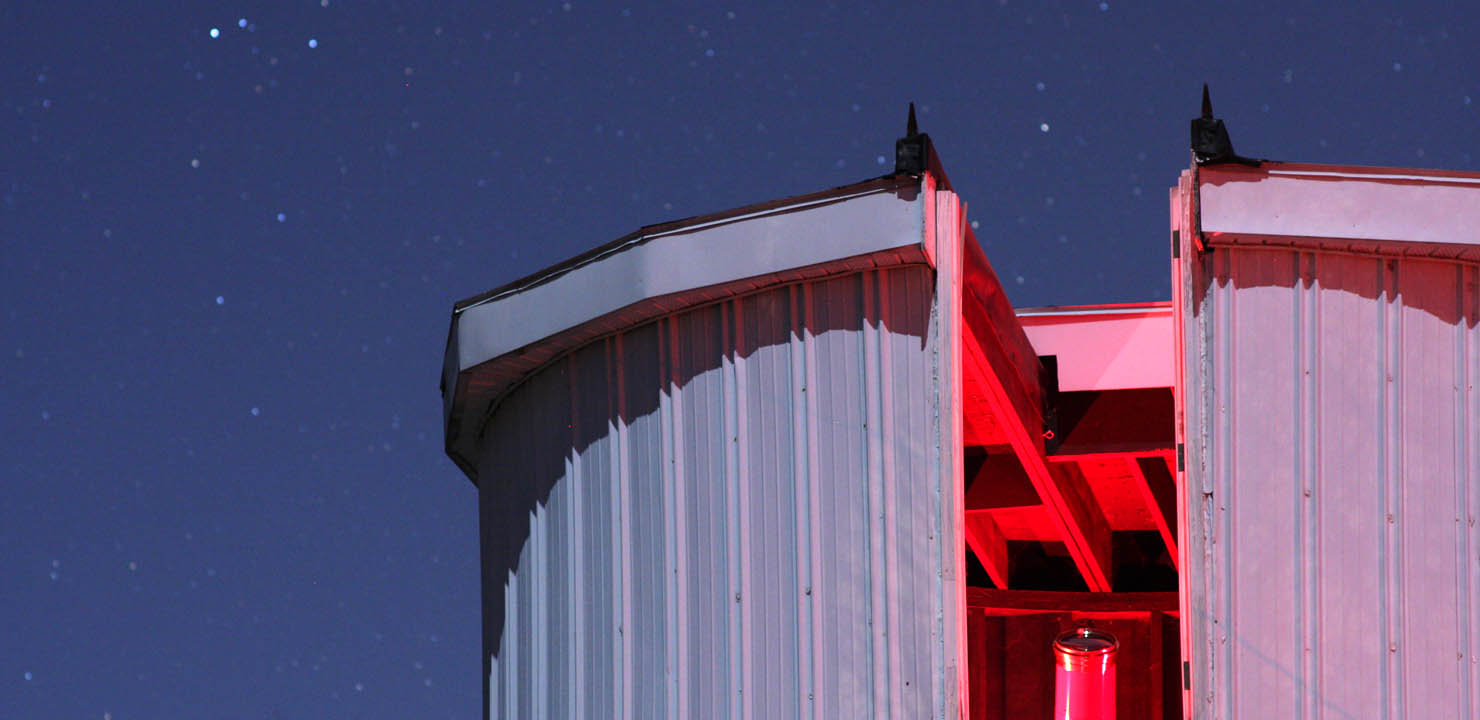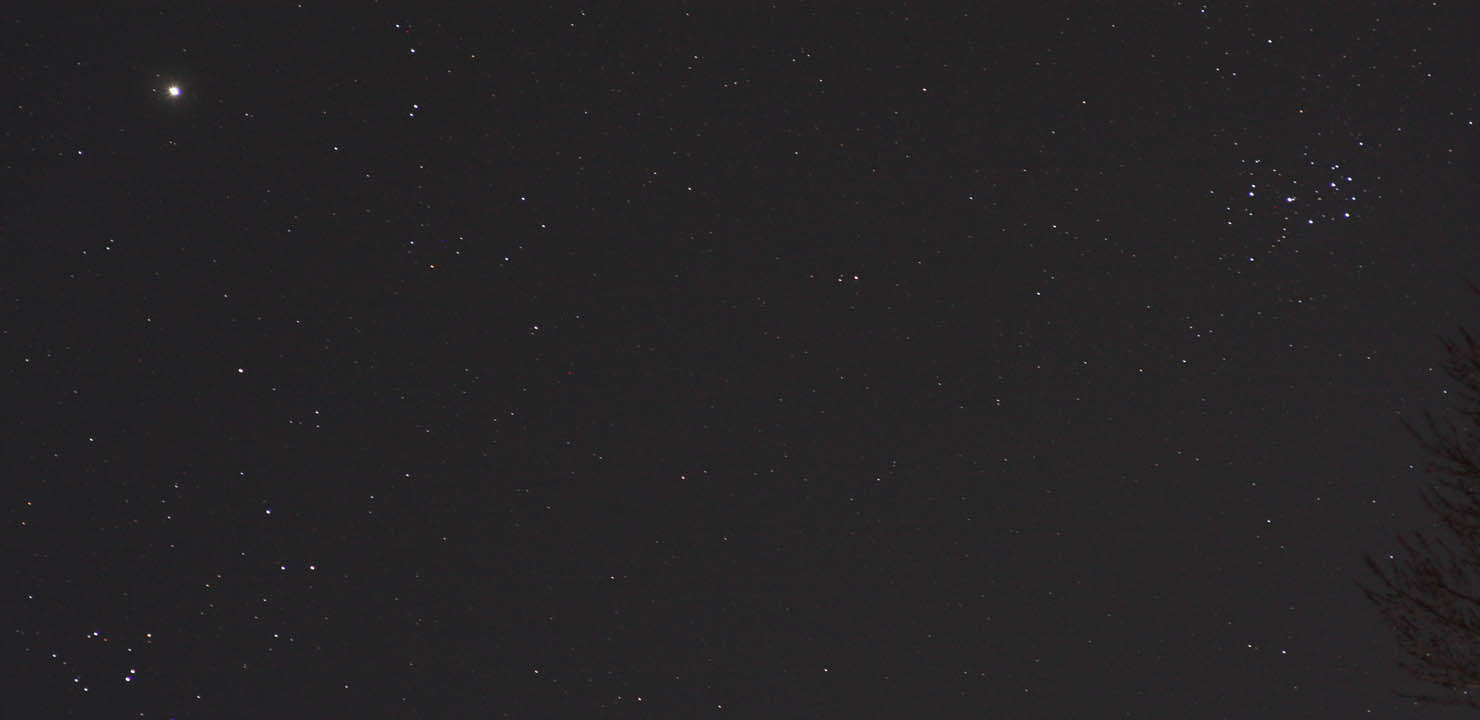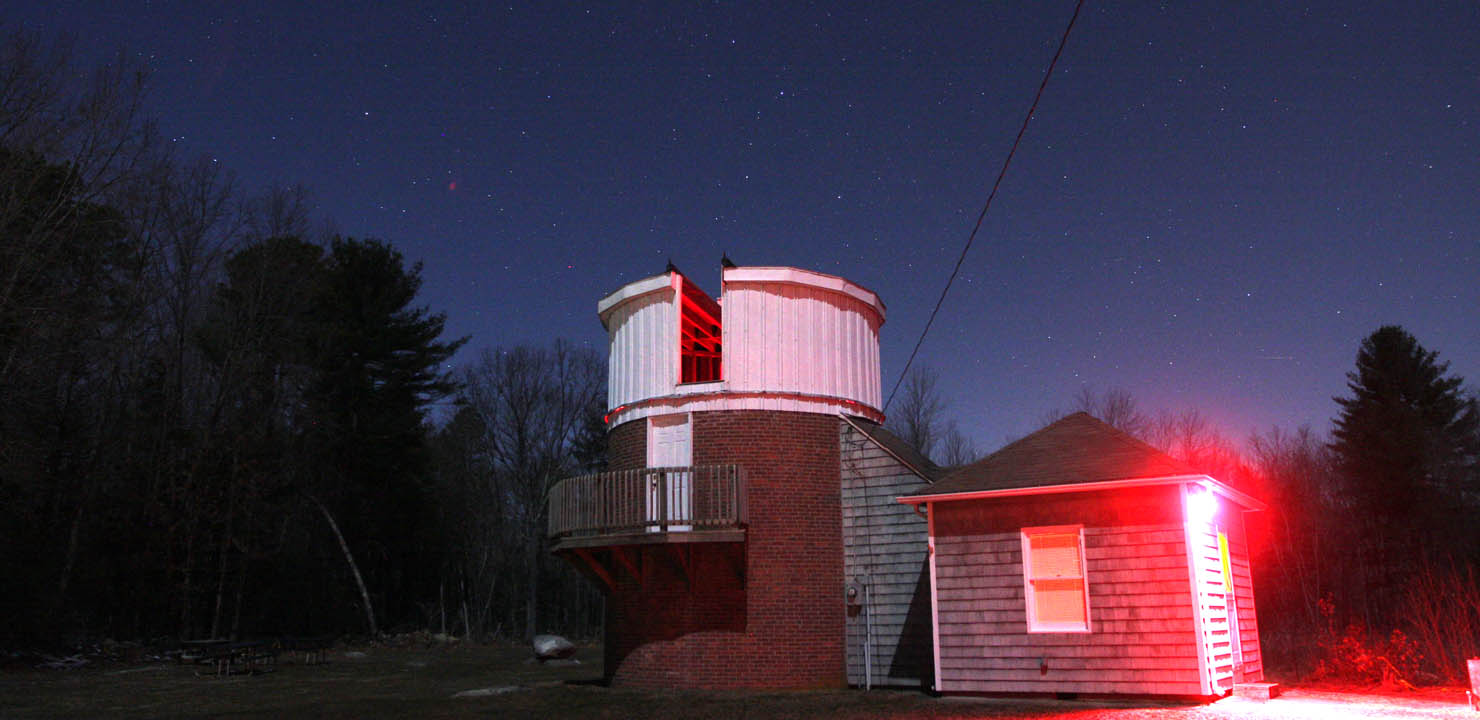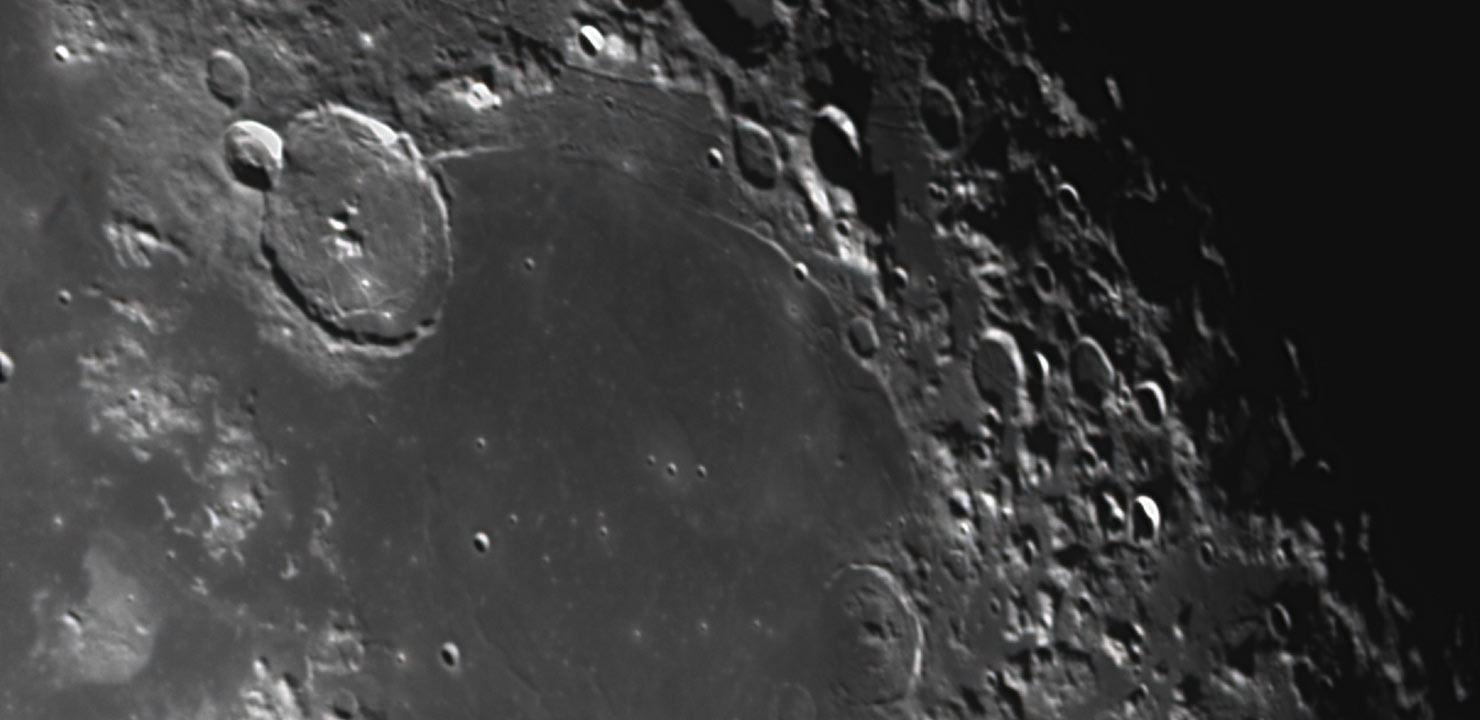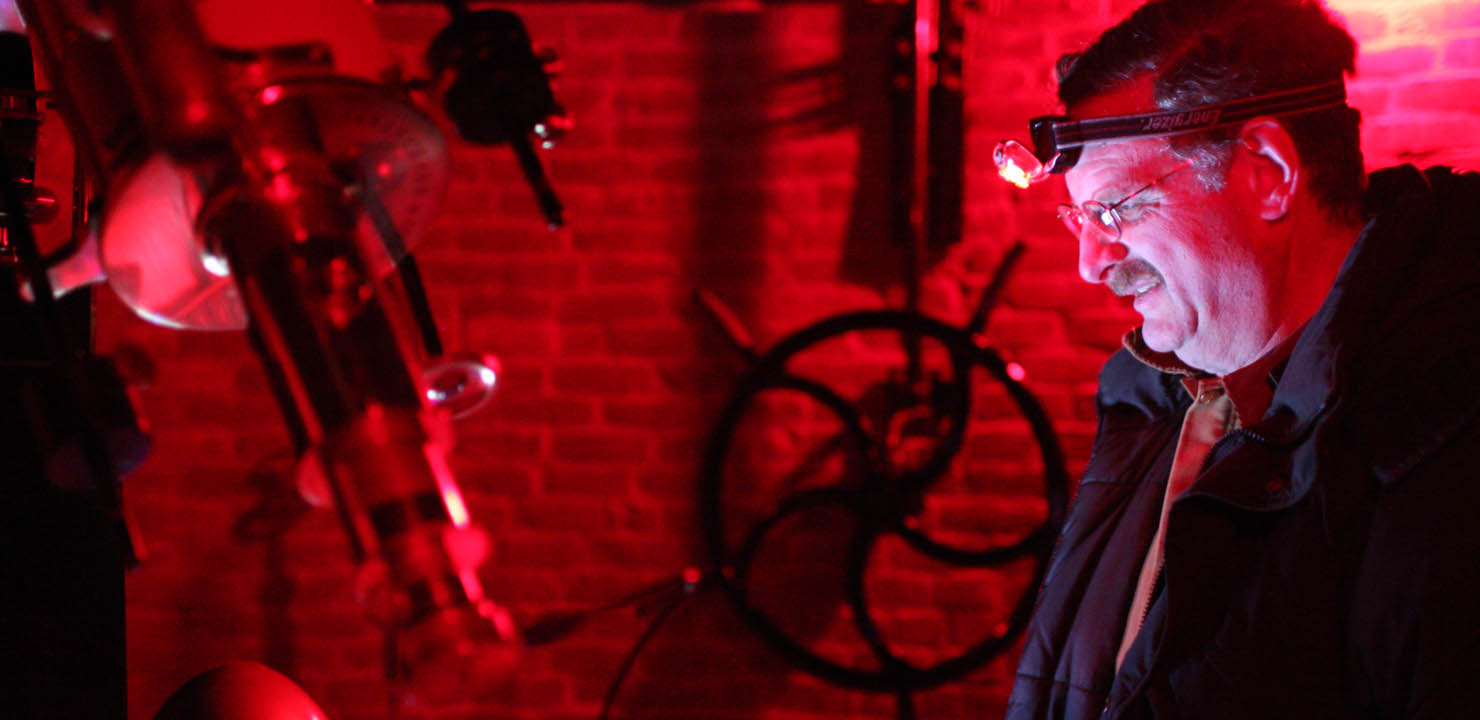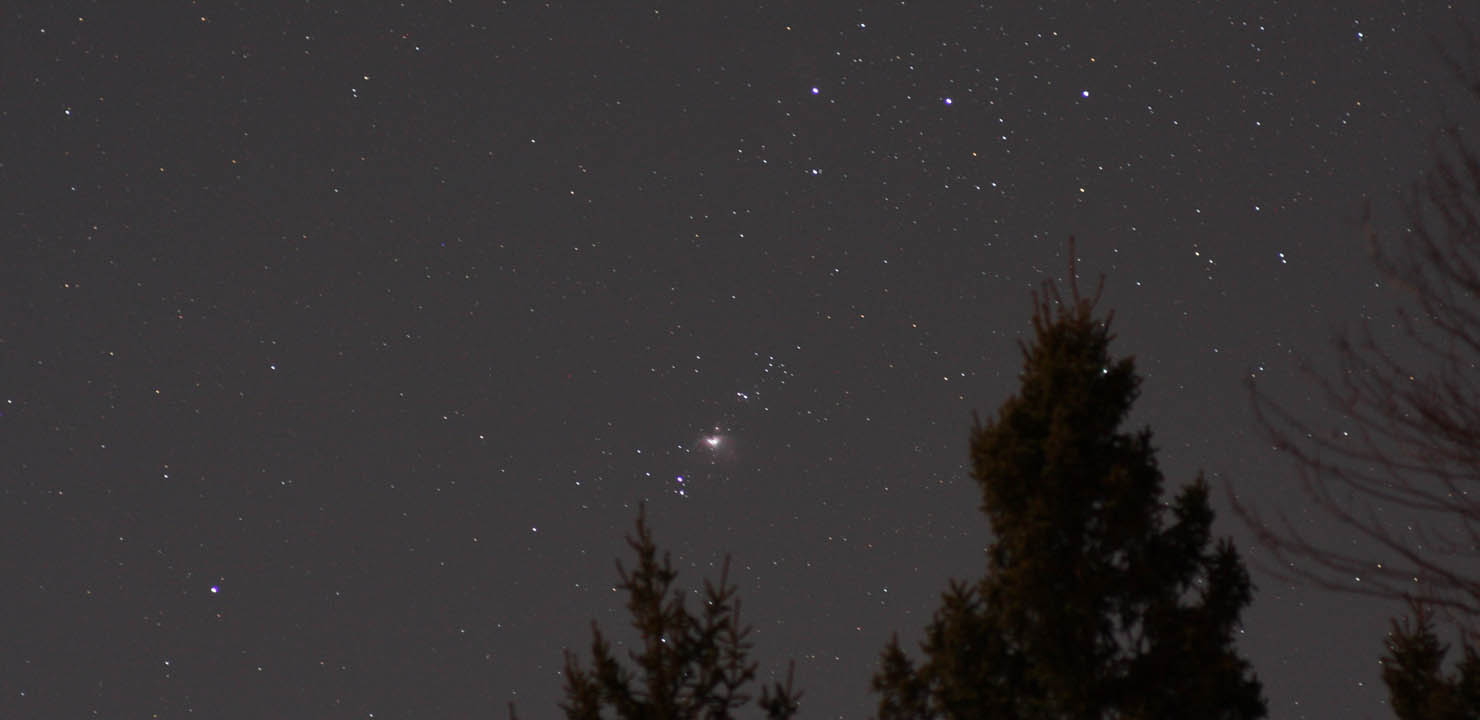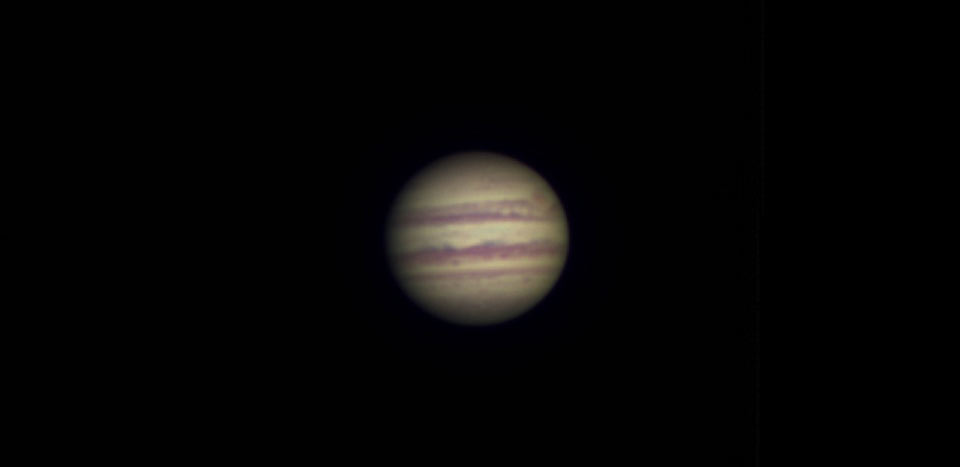
Moon and Jupiter highlight 2013 season opener
by Bob Horton, Dave Huestis, Steve Hubbard & Jim Hendrickson
It was nice to be back to Seagrave after the observatory had been snowed in for so long. We had clear skies and a bright waxing gibbous moon lighting up the grounds.
Several members were present, including Steve Hubbard, Dave Huestis, Jim Hendrickson and myself. The night was cool and breezy, so we all elected to use the Clark refractor, in part because the dome provides a little more comfort against the chill.
When I arrived, Steve was already capturing some nice images of Jupiter with his video camera attached to the Clark. Soon after, some members of the public began to arrive, eventually totaling about 20 people.
Many of our guests got to enjoy seeing "live" images on Steve's laptop as he captured images of Jupiter and the moon. While Steve spent some time processing his images, we put in an eyepiece, and everyone got a chance to enjoy some fine views of Jupiter with all four moons visible, paired up like double stars, with each pair on either side of the planet. The lunar terminator was especially nice, and we were able to observe some rills and craters in great detail. Although it was a breezy night, seeing conditions were much better than I would have expected. Lastly we viewed the Orion Nebula.
Right at closing time, as if on cue, clouds returned, drawing the curtain to our view of the spring sky.
Bob Horton
One-third of a year. 16 weeks. 112 days!!
No matter how one states it, the above amount of time is staggering when you consider it represents the length of time Seagrave Observatory was closed recently on our normal Saturday open nights due to bad weather and inaccessibility of property due to snowy conditions.
Finally on March 23, clear skies prevailed and a small group of Skyscrapers’ volunteers cheerfully opened up the Clark dome and were able to enjoy observing Jupiter, the waxing gibbous Moon, and the Orion Nebula through that wonderful instrument. The seeing conditions were only marginal, but we really did not complain. It was most certainly better than not seeing these astronomical delights at all!
Steve Hubbard and I arrived first around 7:30 pm. I had hoped that Comet PANSTARRS might be visible above the tree-line to our west north-west. Unfortunately that was not the case. Steve had arrived early to use his ZWO ASIMC color camera made by ZWO optical in Shanghai China on Jupiter before any guests visited. It's the one shot color model. It's specifically made for planetary and lunar imaging. You could easily see the atmospheric turbulence on Steve’s computer screen, plus you could see the periodic error in the drive as it jumped back and forth slightly.
(However, taking many images (30 second to 1 minute avi files) and using autoskakkert software to stack them in his computer, he did produce an interesting composite. I hope he submits it so you can see the results for yourself.)
Bob Horton and Jim Hendrickson arrived shortly thereafter.
Some guests arrived while Steve was conducting that imaging session, and he explained the process to everybody. He then removed his camera and allowed our visitors to observe Jupiter through the eyepiece. One could easily see the prominent bands and zones, plus all four of Jupiter’s Galilean moon’s were visible – two on one side and two on the other. It was a beautiful sight.
Skyscrapers member Bob Simon also came out to Seagrave to take advantage of the clear skies as well.
Next we swung around to the Moon. It was quite bright, but everyone got a great look at several features visible on the lunar surface. Twenty visitors came and went during a 1 ½ hour time period. Steve re-installed his camera on the Clark and took several images to show how well the camera and software can produce such great images even under marginal seeing.
Finally we slewed over to the Orion Nebula. Despite the bright moonlight, you could easily see the wisps and tendrils of this beautiful region of star formation.
By 9:30 pm all our guests had left and we began to shut down the facility. Clouds had also started to roll in from the north. We finished up at 9:45 pm.
Submitted By David A. Huestis



